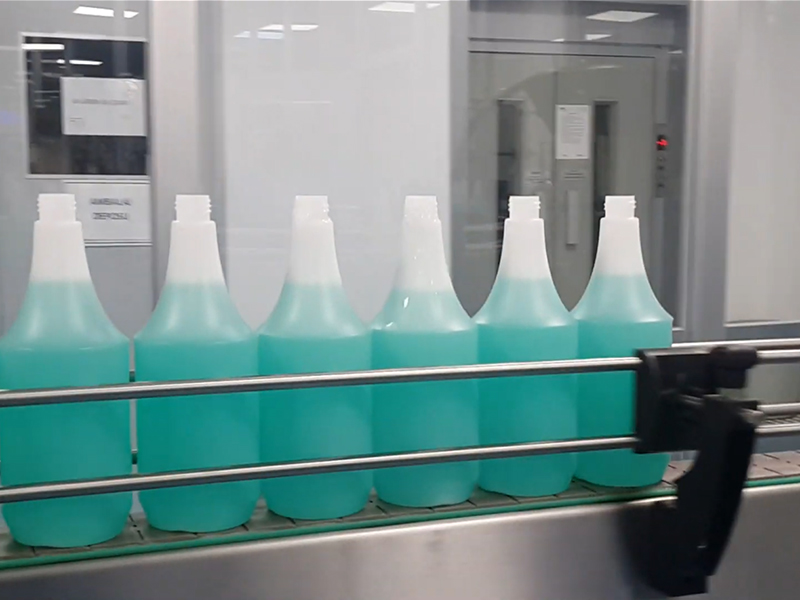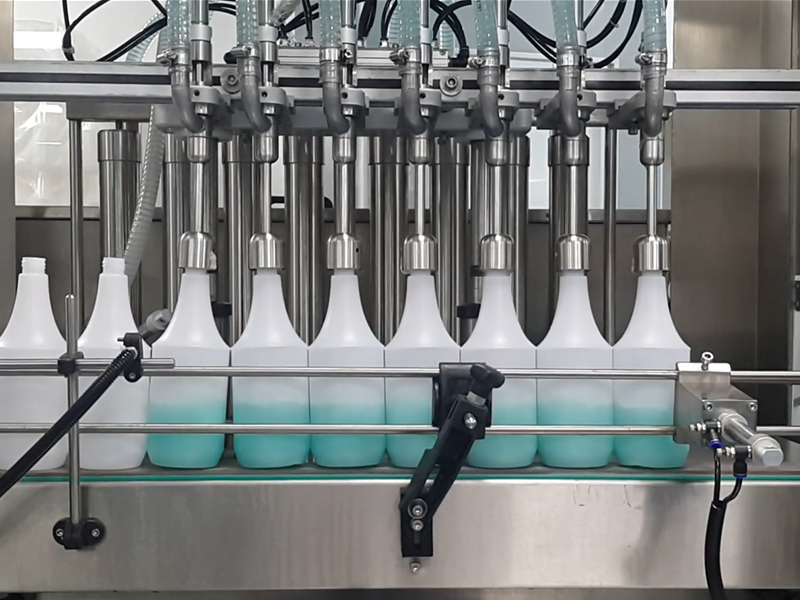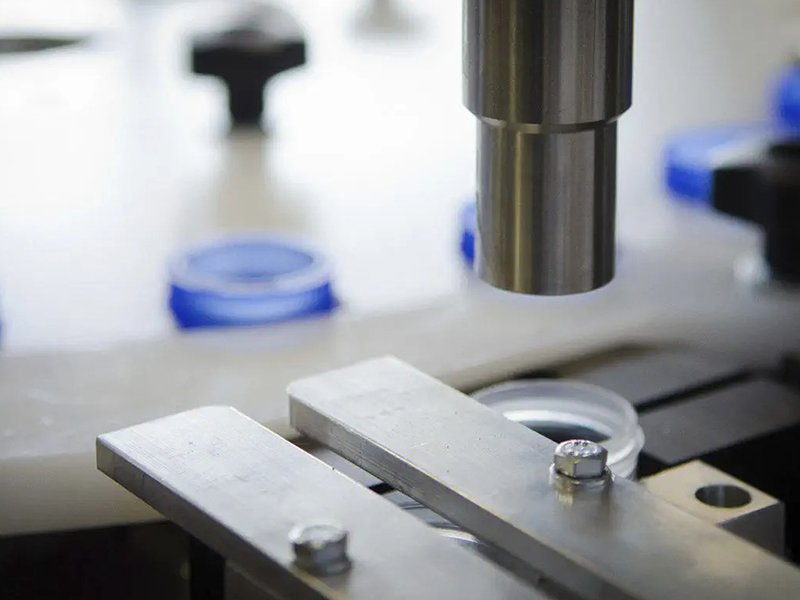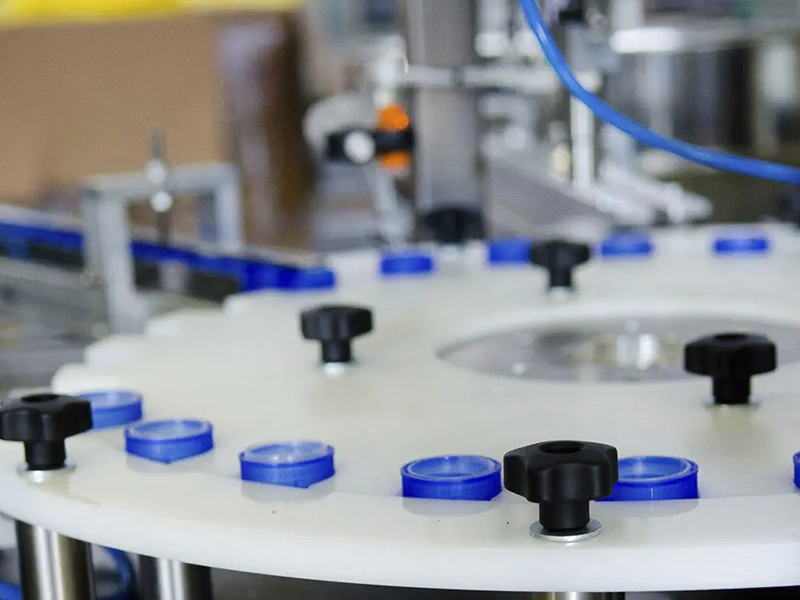Release Date:2025-02-28 15:50:45 Popularity:
With the acceleration of globalization and industrialization, there is an increasing demand for high efficiency, precision and low cost in the production process. As an important part of industrial production, fully automated assembly line equipment has become an indispensable core technology in modern manufacturing with its high efficiency, stability and flexibility. Whether in automobile manufacturing, food processing, electronic assembly, or in daily chemicals, pharmaceuticals and other industries, automated assembly line equipment is widely used, not only to improve production efficiency, but also optimize the quality of production, and promote the innovation of global industrial production methods.

First, the definition and working principle of automatic assembly line equipment
Fully automated assembly line equipment refers to the mechanization and automation of different production processes, stations and equipment connected to form a highly integrated production system. In this system, the flow of raw materials from one process to another is completed automatically, reducing manual intervention and realizing continuous and stable production.
The basic working principle of fully automatic assembly line equipment is as follows:
1. Automation control system: monitoring and regulating the production process through PLC (Programmable Logic Controller) or DCS (Distributed Control System). The control system can not only monitor the real-time operating status of the equipment, but also adjust the process parameters according to the production demand to ensure stable production.
2. Material transportation and transfer: the core of the assembly line is the automatic transfer of materials. Conveyor belts, robotic arms, elevators and other devices transport materials from one station to another to maintain the continuity and efficiency of production.
3. Automation of production process: fully automatic assembly line equipment can automatically complete multiple processes from material processing, assembly, testing, packaging and so on. The operation of each link is precisely designed to ensure the quality and efficiency of each process.
4. Data Acquisition and Feedback: Modern automated assembly line equipment can provide real-time feedback on production status by embedding sensors and data acquisition modules. Managers can remotely monitor the production line, quickly find and deal with problems to ensure the smooth operation of the production line.

Second, the application areas of automatic assembly line equipment
Fully automatic assembly line equipment has been widely used in many industries because of its high efficiency and accuracy. The following are some typical application areas:
1. Automobile manufacturing industry: automobile manufacturing is one of the most widely used areas of automatic assembly line. The traditional manual assembly of automobiles is characterized by low efficiency and poor precision, while fully automated assembly line equipment can efficiently and accurately complete body welding, parts assembly, painting and other processes. Modern automobile production lines almost rely on automated equipment to improve production efficiency and ensure product quality.
2. Food and beverage industry: in the food and beverage industry, the degree of automation of the production line is also increasingly high. Fully automated assembly line equipment is used for automated bottling, packaging, labeling, filling, marking and many other aspects to ensure that the production quality of the product meets the hygiene requirements and to improve production speed. In addition, in terms of packaging, automated assembly line equipment can reduce manual packaging time through efficient packaging systems, and to achieve accurate packaging measurement.
3. Electronic industry: the electronics industry is another important application of automatic assembly line equipment. The production of electronic products usually involves a number of complex steps, such as assembly, welding, testing, etc., any small error may affect the quality and performance of the product. Fully automated assembly line equipment can ensure the accurate execution of each process through high-precision automation control, improve production quality and efficiency, especially in the production of cell phones, computers and other electronic equipment, the application of automated assembly line is particularly important.
4. Pharmaceutical industry: the pharmaceutical industry has very high requirements for product quality and production environment, fully automated assembly line equipment can ensure the precision and sterility of drug production. In the production, packaging and packaging process of drugs, automated assembly line can greatly improve production efficiency and reduce the risk of human contamination. For example, the packaging of vaccines, injections, tablets, etc. all rely on the efficiency and precision of fully automated assembly lines.
5. Daily chemical industry: in the production of daily chemical products, such as shampoo, shower gel, detergent, etc., automated assembly line equipment can be realized from the filling, sealing, labeling to packaging and a series of operations to ensure consistency and health and safety of products in the production process.

Third, the advantages of automatic assembly line equipment
Automatic assembly line equipment can not only improve production efficiency, but also for the enterprise to bring other significant advantages, specifically in the following areas:
1. Improve production efficiency: automated assembly line equipment can realize the production process of uninterrupted operation, significantly improve production efficiency. Especially in the mass production process, the high efficiency of the assembly line equipment is much faster than manual operation, can greatly shorten the production cycle.
2. Enhance product quality: automated assembly line reduces the variability of manual operation, so that each process can maintain consistency, to ensure product quality consistency. Especially in industries with high precision requirements (such as electronics, pharmaceuticals, automotive, etc.), automated equipment can guarantee the production accuracy of each product.
3. Reduce labor costs: through the application of automation equipment, enterprises can significantly reduce labor costs. Although the initial investment in automation equipment is high, but in the long run, by reducing labor demand, improve production efficiency, enterprises can achieve higher profits.
4. Reduce production costs: automated assembly line equipment can reduce the waste of raw materials and improve material utilization. The efficient material transfer system avoids the waste of raw materials in the production process and improves the overall production efficiency.
5. Improved safety: automated assembly line reduces manual participation in dangerous operations, reducing the risk of injury to workers, especially in high temperature, high pressure, toxic and hazardous environments, the application of automated equipment can effectively protect the safety of employees.

With the continuous progress of science and technology, the future of fully automated assembly line equipment will move towards a more intelligent, flexible and green direction. Through the application of Internet of Things, big data, artificial intelligence and other technologies, the future assembly line equipment will realize a more efficient and flexible production capacity, and be able to quickly respond to changes in market demand.
Fully automated assembly line equipment plays a vital role in modern manufacturing industry, which promotes the productivity enhancement and product quality improvement in various industries. With the continuous development of technology, automatic assembly line equipment will continue to move towards a more efficient, smarter, more environmentally friendly direction, to provide more efficient and flexible production solutions for various industries, to help the transformation and upgrading of the global manufacturing industry.